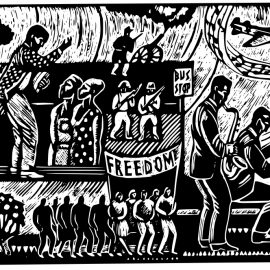

This article is an excerpt from the Shortform book guide to "Unsettled" by Steven E. Koonin. Shortform has the world's best summaries and analyses of books you should be reading.
Like this article? Sign up for a free trial here.
Whom can we trust to report climate science accurately? Why would anyone twist the facts?
Steven E. Koonin argues that climate science is frequently misconstrued, and he attempts to diagnose the root of this problem. He accuses various parties of distorting climate science and explains some of the biases and motivations that appear to be behind the misrepresentations.
Continue reading to learn who’s not telling the whole truth about climate change—and why.
The Parties That Distort Climate Science
Although Koonin argues that an array of parties bear responsibility for misrepresenting climate science, we’ll focus on three main ones: the media, politicians, and climate scientists themselves. According to Koonin, these parties knowingly misrepresent climate science out of their own self-interest, resulting in a harmful shortage of truth about climate change.
Party #1: The Media
First, Koonin argues that the media’s climate stories often sacrifice accuracy in exchange for engagement. He clarifies that, because the media is a business, news outlets compete with one another for engagement—in the age of the internet, they compete for clicks. This business model leads to far-fetched headlines and stories, as such stories generate more engagement.
In the case of climate news, this incentivizes incendiary headlines, such as “Climate Scientists Warn of Incoming Doom.” In contrast, Koonin claims that more accurate headlines, such as, “Climate Scientists Unsure Whether Rising Sea Levels the Result of Human Influences,” aren’t newsworthy.
| How Negativity Bias Might Influence Climate Headlines The incendiary nature of climate headlines reflects a general trend of news becoming increasingly somber. Indeed, data scientist Kalev Leetaru finds that between 1945 and 2005, New York Times articles grew increasingly negative, which he views as evidence of lower levels of happiness as the century progressed. Moreover, although consumers often claim to lament the negative state of the news, researchers find that in an experimental setting, consumers actually prefer to read negative stories rather than positive ones, when given the opportunity. According to these researchers, it’s possible that this preference stems from negativity bias—the fact that humans assign negative information more weight than positive information. With respect to climate headlines in particular, then, it’s plausible that the alarming headlines that Koonin describes likewise play off our negativity bias. Simply put, we prefer to read negative news, and so are more attracted to negative climate change headlines. In turn, this explains why climate headlines featuring alarmist language attract more engagement than hopeful headlines. |
Party #2: Politicians
Next, Koonin argues that politicians oversimplify complex issues to instill passion and loyalty in voters to win elections. Simple messages, Koonin claims, convey confidence and stoke voters’ passion, while voters view nuanced messages as a sign of uncertainty and weakness.
Consequently, with regard to climate change, politicians choose to convey uncompromising messages that win them votes. For progressives, this might involve claiming that climate change is an apocalyptic threat requiring drastic actions; for conservatives, this might involve claiming that climate change is simply a hoax. So, Koonin concludes that politicians across the political spectrum misrepresent climate science to their own benefit.
(Shortform note: Evidence suggests that these views have gotten more entrenched in recent years; one 2019 study reports that, since 2010, an increasing percentage of Democrats view climate change as a serious threat, while an increasing percentage of conservative Republicans denies that climate change is a threat altogether.)
Party #3: Climate Scientists
Finally, Koonin argues that climate scientists face external pressures to pump up their findings. For instance, journals prefer to publish conclusive results, which obscures the uncertainty that afflicts climate science. Similarly, grant foundations only renew funding for researchers with clear findings, which encourages scientists to downplay any doubt in their findings. Moreover, climate scientists’ own peers expect them to conform to the narrative that climate change is catastrophic since that justifies the field’s importance.
(Shortform note: Some journals’ unwillingness to publish inconclusive results is a form of publication bias, the practice of selectively publishing articles based on their results. In this case, publication bias may make it easier to publish articles with positive results about climate change than those with negative results about climate change.)

———End of Preview———
Like what you just read? Read the rest of the world's best book summary and analysis of Steven E. Koonin's "Unsettled" at Shortform.
Here's what you'll find in our full Unsettled summary:
- That humans are only partially to blame for the warming climate
- Why the proposed solutions to climate change are unlikely to succeed
- Alternative responses to climate change and how to improve understanding






